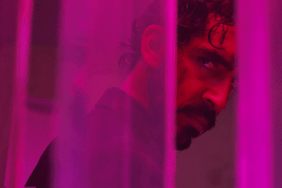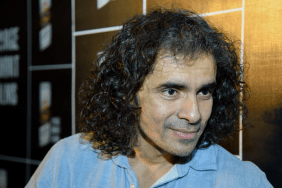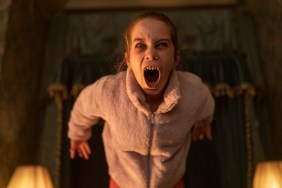
Filmmakers often attempt to pay homage to filmmaking techniques of a bygone era. Frequent and recent attempts include stabs at grind house and blaxploitation cinema, but those films come with a built-in genre audience which makes them seem like less riskier efforts than what writer/director Michel Hazanavicius (OSS 117: Cairo, Nest of Spies) has attempted to pull off.
Just the mention of silent films can and will turn off movie-going audiences instantly no matter how great you say the film may be. Fritz Lang’s Metropolis is considered one of the best sci-fi films ever, but how many Star Wars fanatics have sat down to watch it? Buster Keaton’s The General is comedy gold, but I have a hard time believing fans of today’s raunchy comedies would give it a try. Then there’s Charlie Chaplin, F.W. Murnau, Carl Theodor Dreyer and Sergei Eisenstein and this is just the tip of the iceberg. Yet, I may as well be speaking gibberish, which isn’t an insult to moviegoers, but just evidence to build a case for what Hazanavicius was up against when he decided to make The Artist.
In terms of filmmaking, The Artist is closely related to Charlie Chaplin’s 1936 classic Modern Times in that it uses sound effects and a late moment of dialogue (a song and dance scene in the case of Modern Times), but is otherwise completely silent. It’s a tough task, primarily because it places limits on the filmmaker, limits a filmmaker of the modern era never has to think about and yet Hazanavicius has, for the most part, successfully navigated this tricky mine field and put together a decent film. However, 80 or so years ago I don’t think it would have been hailed as anything more than the norm.
Taking place from 1927-1931, the story begins as silent films are about to be replaced by talkies. At the center of the story is Hazanavicius’ OSS 117 star Jean Dujardin as George Valentin, a major silent film star whose appearance mirrors that of Clark Gable, Trevor Howard or William Powell more than any silent actor that comes straight to mind, though Douglas Fairbanks is probably the closest comparison when it comes to his career.
George’s star is about to be tested as the age of talkies is upon him, but after scoffing at the idea, the proud silent star is soon pushed aside as the cinema makes way for a new kind of star. Peppy Miller (Berenice Bejo) has burst on the scene and is ready to light the box-office on fire. Audiences fall in love with talking motion pictures and she’s an instant hit. George’s response is to try making a silent film on his own. He fails. Combine this failure with the stock market crash and he finds himself sad, alone and forgotten.
Primarily a drama, The Artist follows the lives of these two stars as they move in opposite directions. However, it isn’t all serious notes as this film has several moments of humor with a lot of credit to whomever trained George’s dog (either named Uggy or Jack), a Jack Russell Terrier that immediately reminded me of Nick and Nora’s Asta from The Thin Man.
Highlights I personally took away include an excellent nightmare scene in which George dreams the world is full of sound, but he has lost his voice. It’s not only a highly entertaining and funny scene, but it’s a scene that gets to the heart of the story in a matter of seconds. A running “play dead” trick involving George’s dog also never fails to get a laugh.
The primary success on the part of Hazanavicius, though, is making sure the story never gets too big for its own good. Generally, silents benefit from a simple story with top notch actors doing the rest and this one falls right in line. But in that same sense editing remains important and this film gets a bit ponderous in its second and third acts as George’s downfall begins to take up much of the running time, dragging the film down where it previously moved at a pretty quick clip.
The acting is all solid with Dujardin and Bejo having excellent chemistry and simple overall talent, not to forget the ability to ham it up just enough to achieve emotions worn on their characters’ faces and not heard through speech. The addition of John Goodman as head of Kinograph studios, Penelope Anne Miller as George’s wife and James Cromwell as his chauffeur are pretty much an excuse to get some bigger names in the production, but they all carry their weight.
Overall this is a film with an appreciation for cinema that could definitely stand to have at least one of George’s gloomy moments cut to speed up the pace. Otherwise, Hazanavicius has managed to give The Artist a mild modern twist with black-and-white cinematography by Guillaume Schiffman that is absolutely stellar. Ludovic Bource’s score is also appropriate, though I wouldn’t call it a standout.
The curiosity here will be how the Weinstein Co. plans to handle the film’s distribution. The audience for this kind of fare is small if visible at all, but I am assuming they have confidence they can reach an older audience based on the massive success of The King’s Speech. I don’t see how this can possibly appeal to today’s modern audiences, which are used to motion capture 3D, transforming robots and talking toys, but if anyone should be up to the challenge it would be the Weinstein’s.










